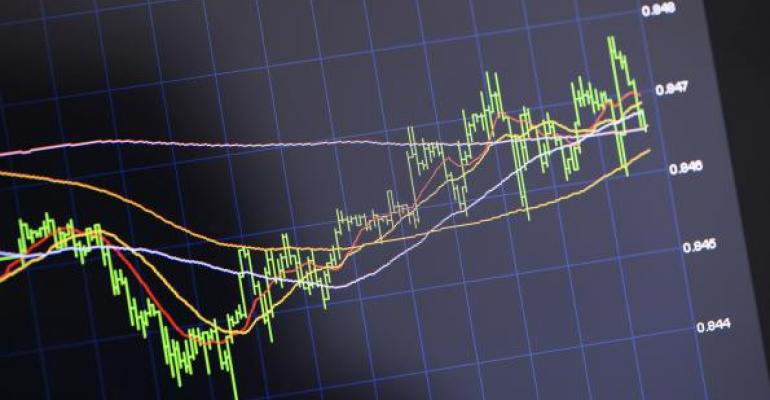By some measures, we’ve got a case of equity halitosis here in the ‘States. One of those metrics is the price ratio of the Guggenheim S&P 500 Equal Weight ETF (NYSE Arca: RSP) to the SPDR S&P 500 ETF (NYSE Arca: SPY). The former, as its moniker declares, tracks an equal-weighted version of the S&P 500 Index while the latter is based on the traditional capitalization-weighted benchmark.
What’s that got to do with market breadth, you ask? Just this: RSP’s weighting scheme allows the strength of the S&P’s smaller issues to percolate and affect the ETF’s price. SPY’s price action is dominated by the benchmark’s large companies. To put this into perspective, consider this: The market value of the S&P 500’s top 50 companies approximately equals that of next 450 stocks. You get a lot more information about market breadth by watching RSP’s price than you do regarding SPY’s.
You get even more information by putting the two ETF prices in ratio. The chart below depicts the RSP/SPY breadth ratio in red and the SPY in black. You’ll note the ratio broke into a downtrend in mid-April. A downtrend, mind you, that remains intact. The narrowing in the ratio coincided with a slowdown in SPY’s momentum and served as an early warning of the summer market break.

The equal-weighted RSP has under-performed the cap-weighted SPY by 3.3 percent over the past 12 months, the largest lag since 2008. And we all know what happened in 2008.
So what does all this mean? Is this a tip-off to a 2008-like crash? The breadth ratio’s not a perfect predictor of major market gyrations. Yes, it warned of the 2008 bear market but gave a false signal in 2012 when it declined while the broad market continued rising.
That said, it’s worth looking around for other warnings of tumult ahead. There are certainly more out there in ETF land. One is flashing red now, signaling investors’ move out of high beta stocks and into lower volatility issues. The indicator, like the breadth ratio, derives from the S&P 500. The PowerShares S&P 500 High Beta Portfolio (NYSE Arca: SPHB) tracks a beta-weighted index of the 100 100 highest beta stock in the blue chip benchmark. Its stablemate, the PowerShares Low Volatility Portfolio (NYSE Arca: SPLV) mirrors a volatility-weighted index of the 100 least volatile issues in the S&P 500.
Gunshy investors have pushed the SPLV/SPHB ratio up out of its recent congestion area, suggesting mounting fear in the equity landscape.

This doesn’t necessarily mean equities will roll over. It does mean that punters are pulling in their horns ahead of the December FOMC meeting next week. We’ll soon find out if that fear is justified.
Brad Zigler is REP./WealthManagement's Alternative Investments Editor. Previously, he was the head of marketing, research and education for the Pacific Exchange's (now NYSE Arca) option market and the iShares complex of exchange traded funds.





